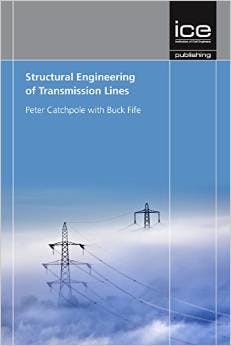When high-wire daredevil Nik Wallenda became the first person to walk across Niagara Falls on a wire in June 2012, he may have had quite a few people on his mind. Surely one of them was Peter Catchpole.
Catchpole, you see, with the able help of his engineering colleagues, designed the steel cable installation that was all that stood between Wallenda and the pounding waters of Niagara Falls that day.
As a former senior project manager operating out of the Hailey, Idaho, U.S., office of POWER Engineers (he is now retired), Catchpole has been a high-voltage transmission line design engineer for 38 years. His specialty has become the design and implementation of some of the more challenging transmission cable designs — everything from structures to span a mile-long gorge above the mountains of British Columbia to Wallenda’s wire across Niagara Falls.
Wallenda also turned to Catchpole to design another installation, this one for a tightrope walk across the Grand Canyon. Wallenda ended up successfully walking the two-inch thick cable across the Little Colorado River Gorge near the Grand Canyon on June 23, 2013. The tightrope was stretched 1500 feet above the gorge floor, and he made the 1400-foot long, televised walk without a net or safety harness.
“You don’t go to school for this stuff,” Catchpole says of his work on some of the more unusual engineering challenges he has faced. Born and raised not too far from the Canadian side of Niagara Falls, Catchpole said his childhood ambition was to be a naval architect and “play with rushing water and fluids around foils.” He attended Queen’s University in Kingston, Ontario, where he studied civil and structural engineering. “Wind on sails is not much different from wind on transmission lines,” he notes.
In 1991, POWER Engineers formed an event now called the Power Delivery Design Conference, held annually the first week of March in Sun Valley, Idaho. The conference is by invitation only and features sessions on all aspects of power engineering. POWER Engineers endeavors to invite speakers and presenters who will present some of their more interesting and colorful anecdotes from the past year to engage and teach.
Catchpole has delighted in leading the show and being one of its presenters. “I do the Ed Sullivan thing,” he quips, “introduce and entertain. Some say I am more like Craig Ferguson.”
At the 2012 conference, Catchpole was tasked to design the Niagara Falls tightrope cable installation. The appeal of the challenge was immediately apparent — contrary to his usual installations, Wallenda would need a cable that could not be tied off by side guy wires every 25 ft to 30 ft (8 m to 9 m). It would have to span 1,570 ft (479 m) across Niagara Falls. Oh, and it would have to be ready to in just two months.
Catchpole, of course, was eager for the challenge. The name of the game was to give Wallenda a cable that would offer no surprises during his walk. After the first trial, Catchpole and Wallenda discovered that a long unstayed cable wasn’t going to work because of the complete lack of torsional stiffness. “It rolled out from under Nik like he was walking on a log in the water,” Catchpole recalls. “We had to place pendulums at intervals to lock the thing down from twisting.”
Another non-tightrope-related Catchpole design was for a structure made of nothing but cables to span a deep avalanche-riddled valley in northwest British Columbia, near the town of Kitimat. “The powerhouse inside the mountains there is like something out of a James Bond movie,” Catchpole offers, noting that its eight generators feed two transmission circuits on which towers and lines would periodically be damaged or destroyed by avalanches. After one too many such avalanches, the line’s owner decided it was worth a rather large investment to build something that would last. Catchpole’s design features bundling 28 cables 4,000 ft (1,219 m) long into larger cables that span above the old tower locations 500 ft (152 m) below. Everything had to be put on the mountain and constructed by helicopter, as the terrain and remote location meant there was no way to get land-based vehicles anywhere near the site.
Catchpole was both challenged by and inspired by the environment and the scenery in British Columbia, endeavoring to design a structure that not only could withstand avalanches, but also look good against the breath-taking backdrop of the mountains. “I try to make transmission towers that nobody wants to deal with look as good as they can,” he observes. “I am forever chasing good ‘form and function’ design. My colleagues call me a transmission architect.”
It only makes sense that a character as interesting and colorful as Peter Catchpole was born with an almost Dickensian surname, with its own colorful story. “Webster’s tells you that Catchpole is from the French, from ‘catch poulet,’ Catchpole explains, noting that poulet being the French word for chicken, the literal translation of his name is something like “chicken chaser.” A chicken chaser in medieval France was in turn a euphemism for a tax collector — literally “one who counts chickens” to determine a person’s or household’s wealth.
Perhaps it’s a good thing Catchpole wasn’t given his surname today. After all, how does one say, “one who seeks out and loves the oddest and most engaging engineering challenges he can find”?




